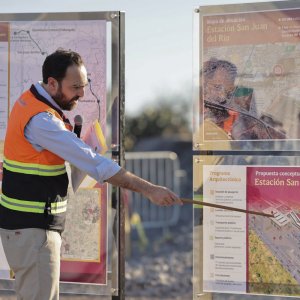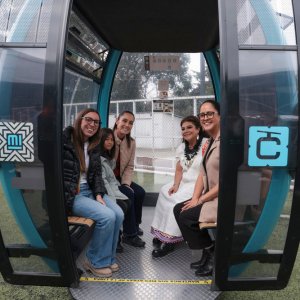
New Payment Schemes for Tansportation Options Emerge in CDMX
 By Pamela Benítez | Junior Journalist & Industry Analyst -
Mon, 11/29/2021 - 15:55
By Pamela Benítez | Junior Journalist & Industry Analyst -
Mon, 11/29/2021 - 15:55
Mexico City’s government has been developing a new payment method for the Ecobici to benefit students through a preferential rate while offering a pay-as-you-go rate to the general public. In addition, lines one through three of the Metrobús have now a zero-contact payment option.
The Ministry of Mobility (Semovi) is establishing three Ecobici new payment methods for bidding available to companies interested in renewing and expanding this transportation system until 2027. According to Semovi, the company that wins the bid will have to offer benefits for students and the elderly to be announced on December 2.
The first new method consists on expanding the current payment option available to ride an Ecobici. The current annual plan costs MX$496 and temporary plans are of MX$112 to MX$372 when using it for one, three or seven days. However, with the new payment scheme, users can now have a temporary payment plan for up to a month.
The second added method consists of having an annual preferential rate for students 23 years or younger that attend public schools. Students will have to prove their status through an official and current document that shows they are enrolled in a public education institution. The preferential tariff also applies for senior over the age of 60 and are required to present their National Institute for the Elderly (INAPAM) card, both original and in copy.
The third available option is a pay-as-you-go rate. The tariff will be calculated differently depending on how long the trip lasts. if the trip takes up to 45 minutes, 46 minutes to an hour or 61 minutes to 24 hours.
On the other hand, the new payment method based on contactless technology in Mexico City’s Metrobús is expected to set a new tendency in paying for public transportation services, as 96 percent of users expect to return to pre-pandemic levels of use with contactless options to pay.
Lines one through three of the Metrobús in Mexico City are now offering more secure and convenient open-loop payment systems based on a zero-contact policy. The implementation has been powered through Visa, Getnet by Santander, Work Level, and Conduent technologies and is expected to impact the millions of people who move daily across the city using this public transportation option.
"122 stations on Metrobus lines one, two, and three have been enabled for the use of the new pioneering contactless, fast and secure payment system," explained Juan Fernández, Vice president of merchant solutions for Visa Latin America and the Caribbean.
According to Luz Ramírez, General Director of Visa Mexico, this implementation of contactless and open pay technologies sets a before and after payment methods in public transportation services for Mexico City, especially in a crucial time for the reactivation of the economy.
This initiative was established due to the results obtained through the Future of Urban Mobility Survey by Visa, where users of public transportation in nine global markets pointed out their expectations of transportation services in the new post-pandemic normal. Ninety-six percent of them plan to go back to their routines that imply the usage of public transportation, with nine out of 10 users expecting contactless payment methods.
For the Metrobús, this initiative means that it has now positioned it at the international leading edge by offering greater flexibility and time saving to its users with the global technological and EMV security standards for payments in urban mobility.
Users need to place their card or smartphone to the tourniquet. It is that simple. Afterward, they will be able to pay in a much faster, secure, and convenient way to access the Metrobús.
This initiative is expected to expand through the entire Mexico City Metrobús system as well as to other localities. In the meantime, this same system has already been implemented in Acapulco in the state of Guerrero; Rio de Janeiro and São Paulo in Brazil; and Santo Domingo in the Dominican Republic.
















